Claw, Gaia, Nocturna: Side A - The Great Old Man's Night, Woodlands Dark and Days Bewitched: A History of Folk Horror
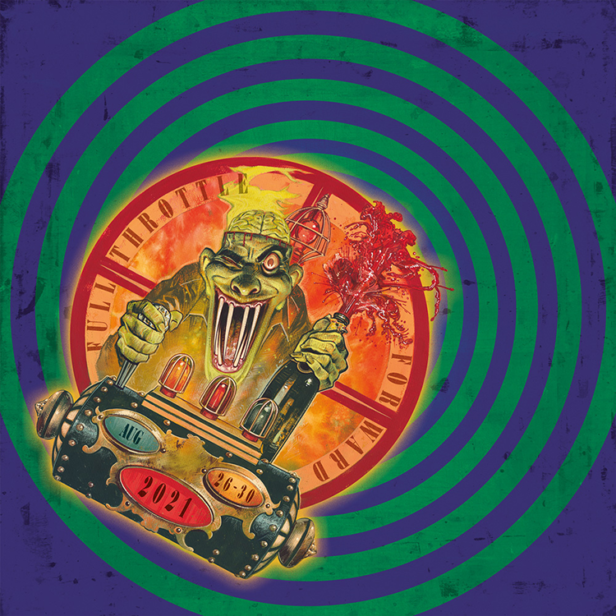
Day four of FrightFest at home – and what a festival it’s been already. Easily better than last year, and an encouraging display that horror is in safe hands. And today has a couple of the ones I’ve been looking forward to the most. I should add that, on top of the ones listed here, I also caught Bringing Out The Fear – though it wasn’t for me. Many viewers seemed to respond to it, and connect with the material. As such, I’m likely in the minority when I say I found it a repetitive trek around a laboured central metaphor. Regardless, I don’t think it’d be fair to include it in my coverage, as I was struggling to stay awake by the end. Mainly because it finished late – it didn’t put me to sleep. In my defence, it’d been a long day of movie watching, including…
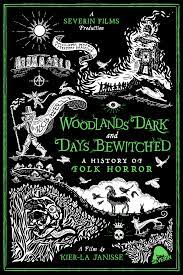
WOODLANDS DARK AND DAYS BEWITCHED: A HISTORY OF FOLK HORROR
Directed by Kier-La Janisse
A three hour plus documentary about folk horror may not sound like everyone’s cup of tea – and fair play, I didn’t think it’d necessarily be mine. Yet as someone who writes about the genre a lot, I’ve never been much of an authority on its history. As such, this exhaustive account seemed like something I should see as much as something I wanted to see. I need not have worried, though. It’s an easy watch, with lots of sketches, photos and some fantastic footage of films: famous and obscure alike. The line-up is staggeringly long – heck, even Bagpuss gets a shout in. It begins with the unholy trinity of The Blood On Satan’s Claw, Witchfinder General and The Wicker Man and then (for the first hour) roughly chart the subgenre’s growth and development in chronological order. Punctuating it are filmmakers, scholars and other writers who contextualise the material with a welcome combo of passion and knowledge. There’s a lecture series worth of material here – I went in a novice, knowing only the more recent films (Jughead, The Witch, A Field In England etc) plus the key older ones. However, I suspect far more informed viewers than I will still have lots to learn. Janisse began this project as a small, narrow film as a Bluray extra for a release of The Blood On Satan’s Claw. Yet as its grown, she’s created a vast, authoritative piece with a truly international focus: the first half is mostly the UK and the US, though the second half takes us around the world in 80 minutes to Mexico, Brazil, Russia, Japan, Guatemala and Iceland among numerous other places. Before finishing on the recent revival, that’s happening against a backdrop of unrest and distrust in modern institutions.
I particularly liked the talking heads reflecting on how many of the movies used folk conventions to explore contemporary issues: torture scenes echoing Vietnam, urban sprawl disrupting rural areas and austerity. Some of these films may look traditional or even twee, with their dark kids’ songs and lights flickering in the night – but they’re often profoundly radical, with layered social critiques. The section on the removals of indigenous people is especially rewarding. I also never considered how Jimmy Carter informed the actions Pet Sematary. Likewise, I never thought of the significance of Jonestown in Children of the Corn. The representations change as society does, too –look at the way it charts the evolution of witches onscreen or how the La Llorona legend changes with tellings. As well as looking at the world now, they also look into often-ignored aspects of the – either taking place in it, or something from it comes back. The view is rarely rose-tinted: old traditions such as colonialism and human sacrifice – how these worked into national identities? Perhaps most importantly, the documentary never gets boring either – there’s always another thing you never knew you want to know more about. That being said, I suspect people buying it for home viewing will treat it as a miniseries to do the sheer amount of information justice: the chapters allow for this. Fascinating, fun and a real achievement – the folk horror documentary I didn’t know I wanted and the only one I’ll need. It’s also added a hell of a lot of movies to my to-watch list.
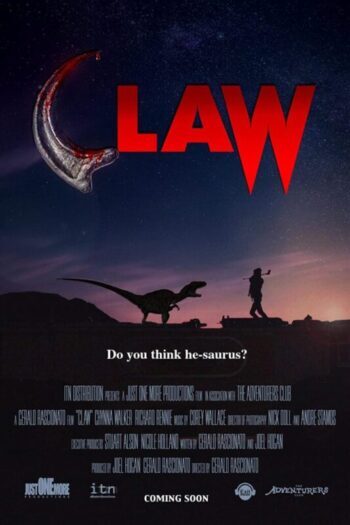
CLAW
Directed by Gerald Rascionato
And now for something completely different. After three hours of smart, scholarly analysis, it’s time for a big dumb dinosaur movie. Stand-up comic Julia and her best friend Kyle break down on a desert highway on their way to a show. Fortunately, they find a place to stay, but, unfortunately, it’s in a creepy Ghost Town museum, run by a creepy longer named Ray. He’s not their biggest threat, though. A Velociraptor has escaped a secret laboratory nearby – and it’s hungry. Not the most sophisticated storyline, but that’s no bad thing, provided it’s entertaining. It isn’t especially, though, with Rascionato seeming caught between two drives: to make a comedy and a more straight-faced creature feature. Neither which it quite manages to do. The humour is more endearing than it is funny, with few laugh out loud moments. Oddly, we rarely see any evidence of Julia being a professional comedian – most of the time, she’s doing sardonic reactions to other people making jokes, and what little of her act we see is mediocre. However, fair play to Chynna Walker and Richard Rennie – they’re enjoyable to watch together, even if Rennie sometimes lapses into a gay stereotype, and it’s refreshing to see a platonic friendship in horror. We can easily believe they’d take a bullet or bite for each other. But at barely an hour, before the laughably slow credits (to make it feature-length), we don’t get too much time to spend with them, meaning we barely know them. Or anyone else, for that matter. A small cast tells you the death toll isn’t much, so they’ve all got to count. Yet the raptor action largely happens offscreen – though there’s one neat kill that made me jump. The dinosaur itself looks ok – provided you don’t expect Jurassic Park. There are obvious budgetary constraints, so, as per the other Spielbergian epic Jaws, the monster is kept it in the shadows for the most part. Though with such a thin story, underdeveloped characters, and not much raptor, it doesn’t deliver on front. I expect the makers were aiming for something between a Tremors style buddy movie and a guilty pleasure. Sadly, it’s ended up being lightweight, forgettable, and surprisingly dull for a movie with a dinosaur.
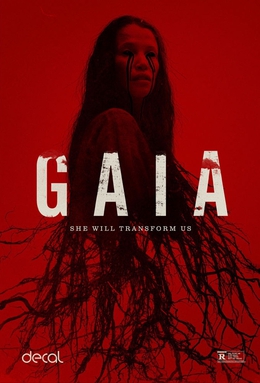
GAIA
Directed by Jaco Bouwer
Now back to folk. Gaia is a South African eco-horror in which a park ranger, Gabi, comes across a pair off-the-grid survivalists: a father and son with a cultish devotion to the woodlands. They seem scary at first and don’t take well to her drone, though once she gets a branch stuck in her, they try to nurse her back to health. Then, as she thinks they’re mad, half man and half fungus monsters from the forest attack their cabin. A sentient Mother Nature fighting back against deforestation and pollution now that humans have reached the tipping point? Something like that. Regardless, I’d be very surprised to learn the director wasn’t a fan of The Last Of Us games. To anyone who knows them, the creatures will be very familiar. From the sprouting and spores to their blindness and even the same clicking noises, these are almost identical to Naughty Dog designs. This is frustrating considering the apparent efforts involved – there are some wonderful special effects. Not so much on the small-scale stuff, where the CGI is a bit uncanny. But with the monsters and what happens to the bodies, the sprouting plant life prosthetics look terrific. Disgusting body horror that’s also oddly beautiful.
As a film with only three major characters, a lot rests on their relationships. These are well done, even if the dynamics are roughly what you’d expect: a religious father and this female outsider wrestling for control of his son. He represents the old ways while she wants young Stefan to see he’s got other options (weirdly, Gabi’s relationship with him seemingly goes between surrogate mother and love interest). To be fair, the father Barend is an ok preacher, with Carel Nel doing a reasonable job with the somewhat cliched material – there’s poetry and a timely polemic. The pacing is relatively slow, though. Initially, this isn’t a bad thing – when we’re simply basking in the stunning locations (first rate cinematography, by the way). But there’s a slow down in the second act, and then the third seems to hone in on the wrong parts. Yeah, the way the conflicts and tensions build up is rewarding, if predictable. However, for me, this comes at the expense of the broader, more interesting threat.
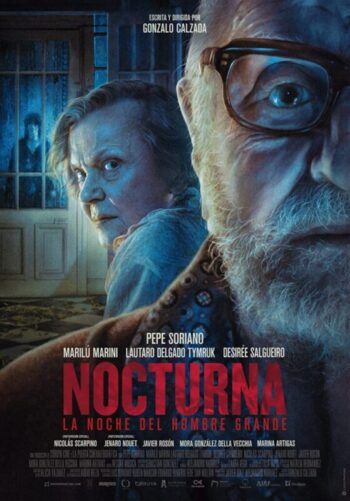
NOCTURNA: SIDE A – THE GREAT OLD MAN’S NIGHT
Directed by Gonzalo Calzada
It’s not often you get a tear-jerker at FrightFest. Not just something slightly sad – a total reach for the tissues and sob movie. Don’t be put off by the clunky name (Side B – – Where the Elephants Go to Die will tell the story from other angles) – this one accomplishes that and then some. The story unfolds over a single night, focusing on a single person on the verge of death. Ulises is in his twilight years, living with his bedridden wife Dalia (who barely tolerates his ramblings), and worrying that they won’t be able to stay much longer. She’s worried about their kid Carlos wanting to force them into assisted living if he saw the state of things there. Something that may be for the best with him leaving the gas on, among other mistakes. Then, amidst a pattern of local burglaries, his neighbour Elena comes to the door. Some plot developments are predictable – there’s a crucial detail most people will figure out within the first fifteen minutes. But then I expect you’re supposed to – the dramatic irony only adds to the tragedy at its core. Potentially it even reflects the difficulty of watching an older person fail to make the connections we can.
Much of the film’s success comes down to the central performance. Pepe Soriano is phenomenal as Ulises – doing a layered, sympathetic performance to rival Hopkins’ recent Oscars turn. He sells the confusion along with the depth of feeling he has for the family members who seem to come and go from him. Then there’s also the rage and stubbornness he’s prone to – just like in people in real life who have been afflicted with memory loss. The supernatural elements are mostly unnecessary to the plot, being more there to disorientate further our protagonist than as a device to explain events. If he’s haunted by anything, it’s his own past decisions – those which have isolated him from his kids and everyone else. The resulting loneliness is captured so movingly in the last act, terrifically underscored by a soundtrack involving sweeping strings and soft keys. The fantastical elements look great, giving fitting visual metaphors for moments of transcendence or showing how scary it can be not even to be able to trust yourself. To be an unreliable narrator of one’s own life. In particular, the way Ulises and Dalia’s younger selves get worked in has a magical quality, wonderfully capturing the innocence he needs to reconnect with. A truly brilliant film that’s, by some distance, the most moving of the festival – and among the most for the year.







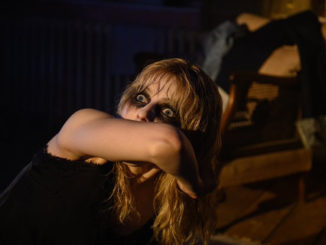
Be the first to comment